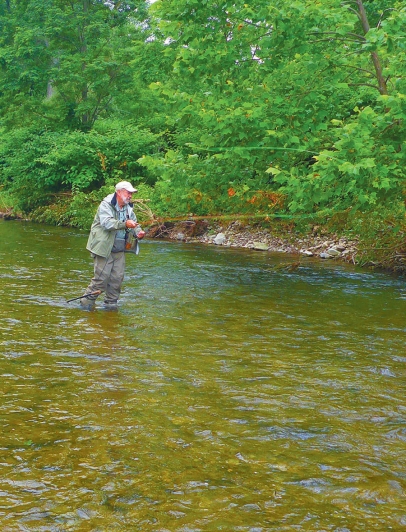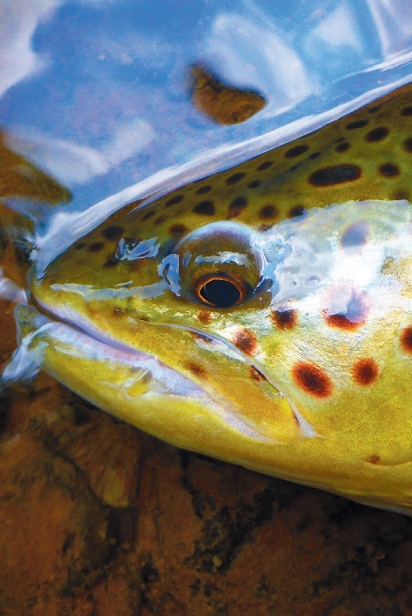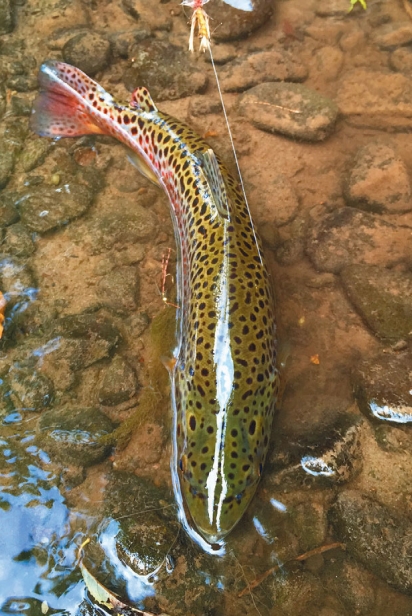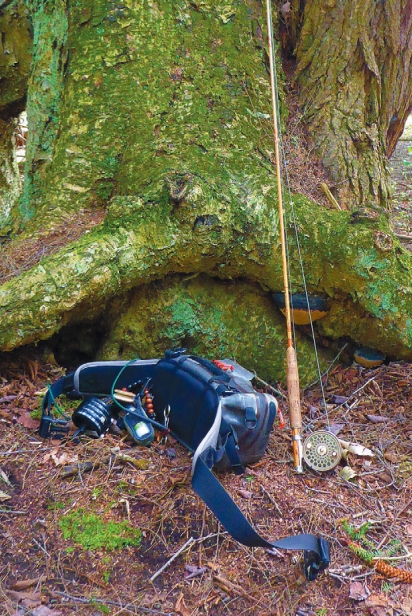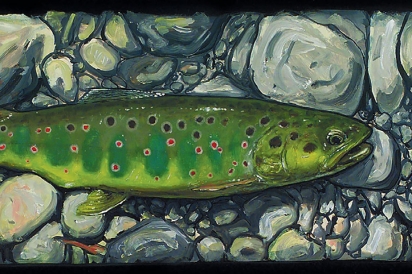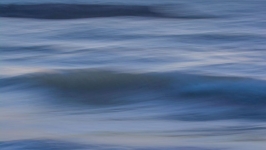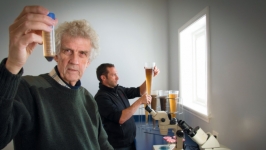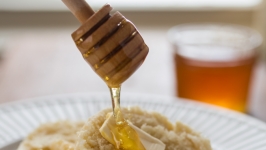Trout Fishing In Western New York
When I was young, I was not much of a fisherman but that didn’t deter my friend and me from regularly walking five miles to our closest trout stream. The adventure of being on our own and walking the rural roads and wooded paths to the stream was much more exciting than the fish we never caught. Frequently, in the heart of the summer, the sky darkened as storms approached quickly behind us. There was always a strong earthy smell in the air moments before we heard the wall of rain hitting the pavement. We’d start to run, but a few seconds later we’d be drenched as the torrent of water passed over us. We’d stop running, catch our breath, then laugh uncontrollably as we marveled at what had just occurred.
When I grew older and fished with a small group of friends, I left my rod at home and instead brought a cast iron pan, spatula, a plate, a fork, butter, lemons and salt. While the anglers walked the streams trying to entice fish with worms, I built a fire and readied the pan for their catch. After the first angler returned to the fire, I cut a line down the white belly of the trout from the gill plate to the anal fin and separated its innards from the rest of the body. I then splayed the trout in half so it could lay flat on the pan. A half-inch rectangle of butter tossed into the hot pan melted almost immediately, covering its surface. I carefully placed the fish inside. If the fish was too large, I removed the head by cutting along the outside of the gill plate. As the smell of butter and cooked fish emanated through the forest, the other anglers returned with their trophies. Once the skin of each fish crisped and the flesh turned white, I removed the trout from the pan, placed it on the plate and prepared the pan again for the next colorful salmonid. Lemon juice and salt was drizzled over the browned body and we all took small bites of the trout. It was a slow process but every fish was savored, providing time to argue about the prowess of each angler and the ineptitude of the cook. Ridicule and laughter mixed with the sound of water roiling over the rocks as the long afternoon shadows were lost to the darkness of the setting sun, and we continued to enjoy each others’ company into the early hours of the next day.
Countless memories collected around the act of fishing instilled in me a respect for nature, a love for trout-filled streams in beautiful environments and the desire to experience local cuisine around the world.
Decades later, wanting to share my experiences in the wilderness with the community, I find myself in the honorable vocations of professional fly fishing guide and director of a youth fly fishing program. I have gotten better at putting fish to hand but it was a long process of spending countless days on the water and hours reading everything I could find about local trout species and entomology. This research has influenced my view of the world, how I raised my children, the artwork I create, the community service I participate in and the food I put on the table.
Luckily for us all, Western New York has a plethora of fishing opportunities from world-class steelhead fishing in the Lake Erie tributaries to beautiful little streams that are stocked throughout the spring with large numbers of trout. Trout fishing, however, can be a bit of a puzzle to figure out so I have put together some helpful hints to prepare you for a productive and memorable day on the water.
WHERE TO GO
A great book that provides insight and access points to all of the streams in the area is Sander’s Fishing Guide: Western New York Edition by John M. Sander and Hugh Burtis. This thorough publication is required reading for anyone wondering where to start fishing. The New York State Department of Environmental Conservation also has detailed maps of streams that provide public fishing access.
WHEN TO GO
There are year-round trout fishing opportunities in Western New York. While steelhead (a migratory strain of rainbow trout) fishing is legal throughout the year in Lake Erie tributaries, inland trout (brown, rainbow and brook trout) fishing begins on April 1st and continues through October 15th. The peak of the steelhead season is generally October through December and then again between March and April. Inland trout fishing peaks during major insect hatches in late May through mid-June. Inland trout, however, can be found throughout the season. There are several regulations to keep in mind and licenses to purchase before going out on the water so make sure you do a bit of studying or consult your local sporting goods store for advice.
HOW TO GO FISHING AND WHAT YOU NEED
There are countless books on how to fish and what to buy, but the best way to learn is to receive one-on-one instruction. While I obviously think that it is always wise to hire a guide, free opportunities to learn how to fish are provided at the Orvis Store on Transit Road in Buffalo and at Adventure Bound on the Fly in Ellicottville. The staff at both places are very friendly and eager to turn the community on to fishing. The Children in the Stream Fly Fishing Program also provides weekly free fly tying and fly fishing lessons to adults and children. The classes are given year-round on Tuesdays from 7 to 8:30pm in the Costello Room of the Rockefeller Art Center at the State University of New York in Fredonia.
WHERE ARE THE FISH
If you are looking to catch your dinner, you will also need to know where the fish are and how many you can take home. The New York State Department of Environmental Conservation has been nice enough to provide an approximate per-county schedule regarding when, where and what types of trout they will be stocking each spring. They have also determined the number of trout that can be sustainably taken home. The limits vary by species and differ between Lake Erie tributaries and inland streams. While I feel that more fish remaining in the stream mean better chances of catching more in the future, there is something rewarding about taking a couple of fish home to share with your family and friends.
And there you have it. Trout fishing can be as simple as getting a container of worms or flies at your local sports store, buying a beginner fishing rod and a license, and—with a little advice or reading—you could be chuckling excitedly as you stand calf-deep in one of our many pristine streams feeling the tug of a beautiful trout at the end of your line. The important objective is to get outside, embrace nature and create lifelong memories by yourself or with friends and family.
Tight lines!
> New York State Department of Environmental Conservation, dec.ny.gov/outdoor/44879.html (maps); dec.ny.gov/outdoor/7917.html (regulations); dec.ny.gov/outdoor/30465.html (spring trout stocking)
> Children in the Stream, youth fly fishing program, albertorey.com


